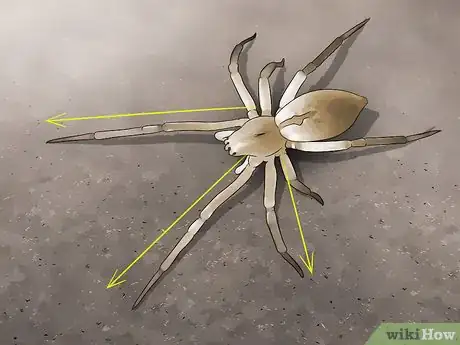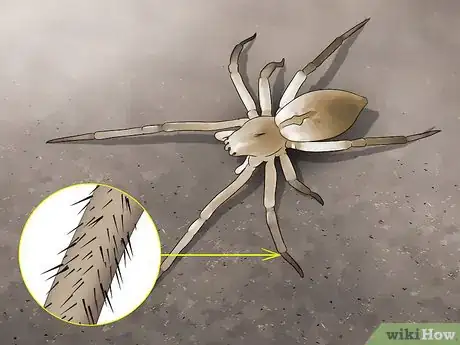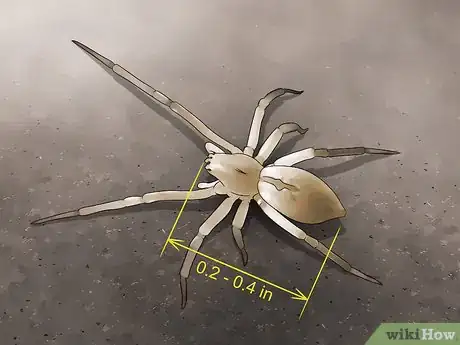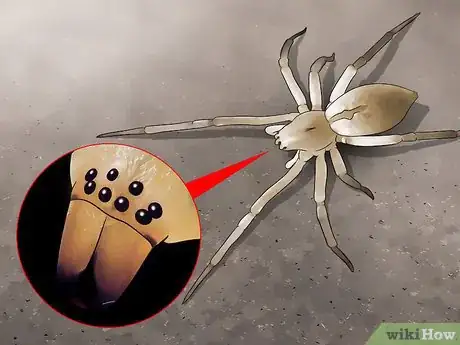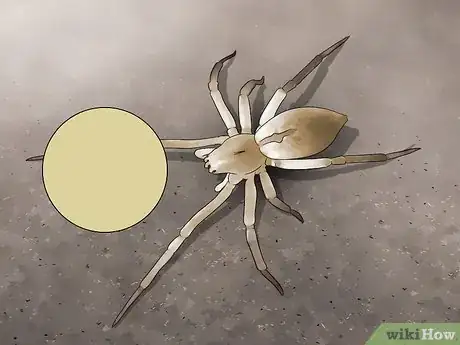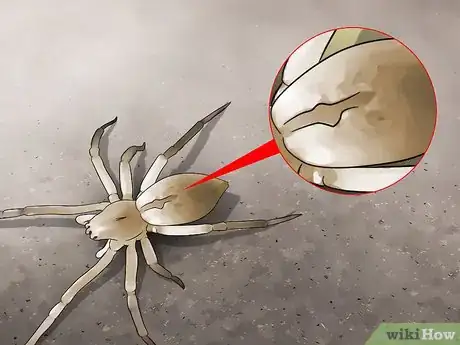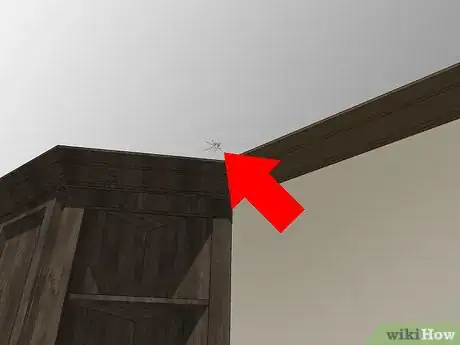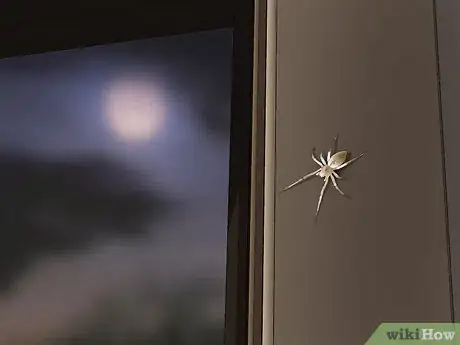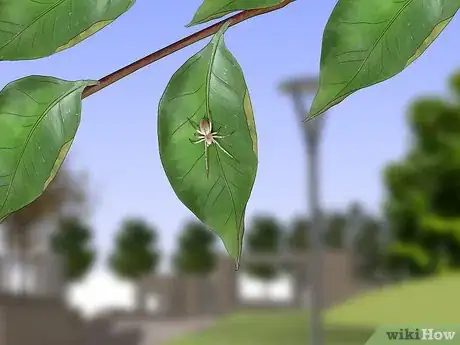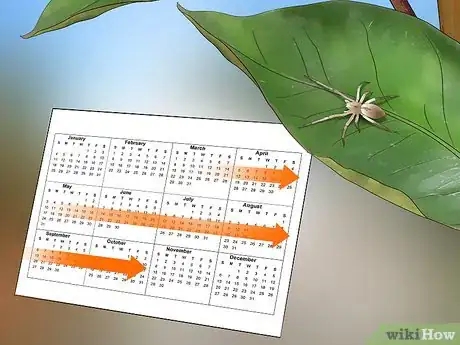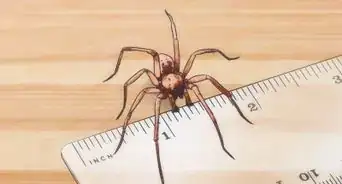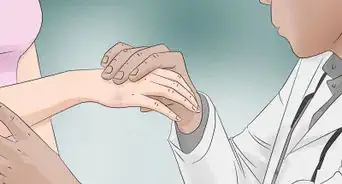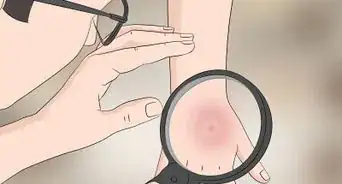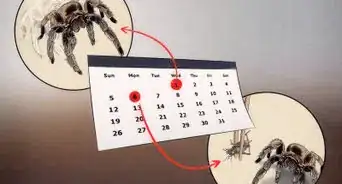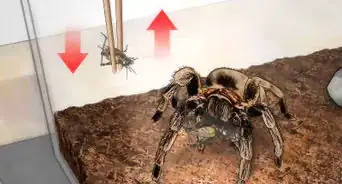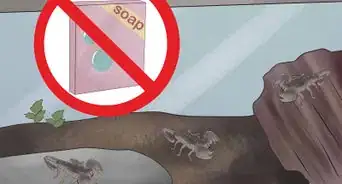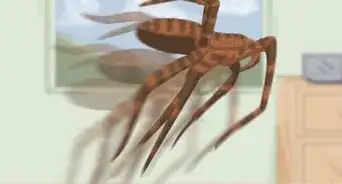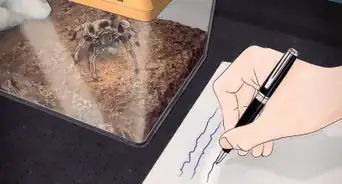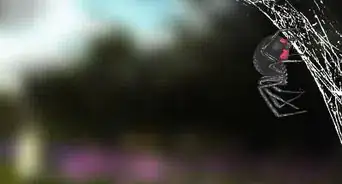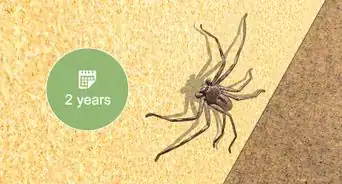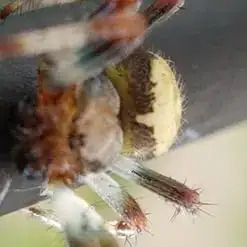This article was co-authored by wikiHow Staff. Our trained team of editors and researchers validate articles for accuracy and comprehensiveness. wikiHow's Content Management Team carefully monitors the work from our editorial staff to ensure that each article is backed by trusted research and meets our high quality standards.
This article has been viewed 256,099 times.
Learn more...
Yellow sac spiders are common spiders throughout Europe and North America. While they are venomous, their bites rarely result in serious medical consequences. Yellow sac spiders are also relatively easy to identify. By looking at the spider's physical characteristics, looking for its sleep-sac, and watching for it in its habitat, you'll be able to properly identify a yellow sac spider.
Steps
Identifying the Spider's Physical Characteristics
-
1Look for long legs. The yellow sac spider's legs are relatively long – slightly longer than their body. In addition, their front 2 legs are longer than the rest of their legs. Their legs are also relatively thin and do not have a muscular appearance.[1]
-
2Watch for black feet. The tips of the yellow sac spider's legs are black in color. The color comes from tiny black hair that cover their feet. This hair enables the spider to climb vertically – up trees and walls -- with ease. Since the spider doesn't spin webs, this is a huge help in enabling the spider to climb.[2]Advertisement
-
3Determine if the spider is .2 to .4 inches (1 cm) in length (5 to 10 mm). The yellow sac spider is a relatively small and slight spider. While females are somewhat larger, large spiders will only measure .4 inches (1 cm) (10 mm) in length (without their legs).[3]
-
4Look for the spider's eight similarly-sized eyes. The yellow sac spider's eight eyes are mostly equal in size and are arranged in two even lines. While the eyes are mostly black, the two middle ones might appear silver or gray.
- Their head and eyes may be covered with tiny black or silver hairs.[4]
-
5Spot the yellow color of the spider. Most yellow sac spiders are pale yellow or tan. However, some of them range from a light green, to orange, to a light brown. This is largely dictated by the spider's habitat and diet. As a result, be aware that the spider's color may vary based on the region you live in.[5]
-
6Observe a “heart mark.” Yellow sac spiders have a dark mark/line that runs up and down the middle of the spider's abdomen. The heart mark is named so because it crosses over the area where the spider's heart is located.[6]
Spotting the Spider's Sleep-Sac
-
1Look for a “sleep-sac.” Sac spiders spin a silk-like tube or sac. They use the sacs to sleep in during the day. They tend to spin these sacs around dawn. Ultimately, the spider's sleep-sac is one of its most characteristic qualities.
- Yellow sac spiders don't spin webs, they create sleep sacs.[7]
-
2Watch for sacs in rolled up leaves or under sticks and logs. When outside, you'll find sacs under sticks, logs, in rolled up leaves, or in any other area where the spider feels like it will be secure and out-of-the-way.
- You may run into sleep-sacs when you're gardening, racking leaves, or cutting hedges.
-
3Observe yellow spider sacs in hard-to-reach areas indoors. Yellow sac spiders tend to create their sacs where interior walls meet the ceiling, behind pictures, or around windows. These are out-of-the-way places where they won't be disturbed in the daytime.[8]
Observing the Spider's Behavior and Habitat
-
1Look for the spiders hunting at night. Yellow sac spiders are nocturnal. As a result, you can spot them hunting their prey at night time. They feed on flies and other small insects. As a result, you may be able to observe the spider hunting in an area where there are many flies or similar-sized insects.[9]
-
2Look for the spiders in trees and shrubs that border open areas. In the outdoors, yellow sac spiders are commonly found on the margins of open spaces like fields, meadows, or even parking lots. They can be found in bushy trees and large shrubs.
-
3Observe the spiders outside during the spring and summer. Depending on your region, yellow sac spiders can commonly be spotted outside from April to October - warmer months when eggs hatch and young spiders mature.[10]
-
4Watch for immature spiders moving inside during the late fall. As the weather turns, yellow sac spiders tend to migrate into cars, buildings, dead trees, and other structures. There, they create sacs to in which they stay during the winter. They'll emerge fully mature in the spring.[11]
Community Q&A
-
QuestionHow can I tell whether a spider is a brown recluse or a yellow sac?
 Community AnswerBrown recluses are bigger and have a violin shape on their back, not a straight line.
Community AnswerBrown recluses are bigger and have a violin shape on their back, not a straight line. -
QuestionDo yellow sac spiders ever look colorless and drop straight down on a web string?
 Community AnswerIn my area (Northern Virginia) I have seen many yellow sac spiders around my house and just a couple nights ago I saw a spider that was slightly transparent drop straight down from my ceiling fan, so yes, I believe so.
Community AnswerIn my area (Northern Virginia) I have seen many yellow sac spiders around my house and just a couple nights ago I saw a spider that was slightly transparent drop straight down from my ceiling fan, so yes, I believe so. -
QuestionHow deadly is the yellow sac spider?
 Community AnswerThe toxicity of their bite itself isn't much of a problem, but it can cause other problems. Their bites have been linked to MRSA infections and they can be quite painful and lead to a necrotic lesion, which can cause a whole bunch of other complications. Some people react strongly, and some people don't. For your safety, it's just best to avoid them entirely.
Community AnswerThe toxicity of their bite itself isn't much of a problem, but it can cause other problems. Their bites have been linked to MRSA infections and they can be quite painful and lead to a necrotic lesion, which can cause a whole bunch of other complications. Some people react strongly, and some people don't. For your safety, it's just best to avoid them entirely.
Warnings
- The symptoms from a bite of a yellow sac spider mimic the symptoms from a bite of a brown recluse spider. If at all possible, capture the spider that bit you so that it can be positively identified. That way, you can get the appropriate medical attention.⧼thumbs_response⧽
- Yellow sac spiders are very aggressive and very invasive. Check or shake your sheets at night to ensure none have already started hunting in there. As they like to hide in crevices or pictures, once they feel threatened they'll drop to the ground and run. If your bed is pressed against the wall, move it slightly so none drop in. Additionally, spider repellant can be placed around the stands of your bed to ensure none climb up to go hunting while you are sleeping.⧼thumbs_response⧽
References
- ↑ http://spiderbytes.org/tag/yellow-sac-spider/
- ↑ http://spiderbytes.org/tag/yellow-sac-spider/
- ↑ http://www.insectidentification.org/insect-description.asp?identification=Yellow-Sac-Spider
- ↑ http://spiderbytes.org/tag/yellow-sac-spider/
- ↑ http://spiderbytes.org/tag/yellow-sac-spider/
- ↑ http://spiderbytes.org/tag/yellow-sac-spider/
- ↑ http://lancaster.unl.edu/pest/resources/sacspiders.shtml
- ↑ http://lancaster.unl.edu/pest/resources/sacspiders.shtml
- ↑ https://pestid.msu.edu/insects-and-arthropods/yellow-sac-spiders/
About This Article
To identify a yellow sac spider, look for a dark mark or line that runs down the middle of its abdomen. Additionally, note the length of the spider, since yellow sac spiders are usually between .2 and .4 inches in length. You can also observe the spider's feet, which will appear black due to the tiny black hairs that cover them. Alternatively, try looking for the spider’s “sleep-sac” which is a silk-like tube that yellow-sac spiders make instead of spinning a web. For tips on how to identify a yellow sac spider based on its eye structure, read on!
